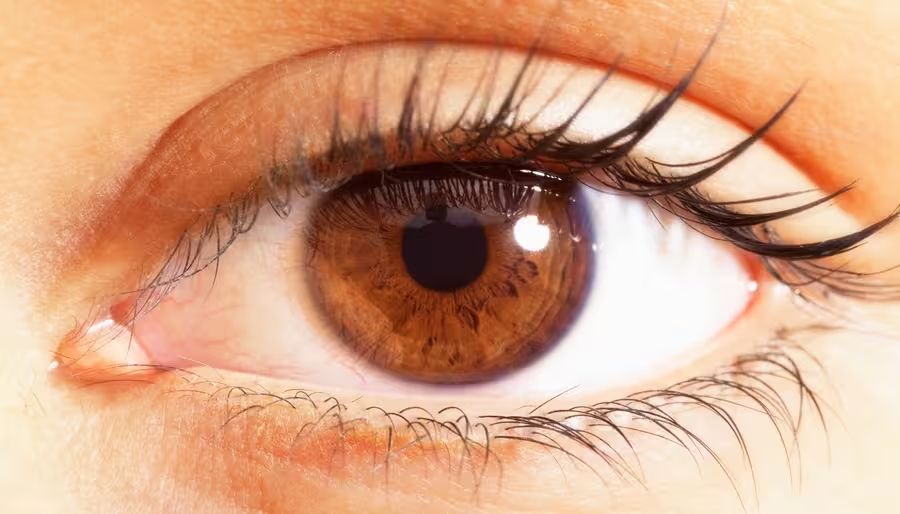
Hate it or love it, one’s eye color is an undeniably remarkable feature. Being a distinct combination of hues shared by no one else in the world, eye color is as diverse as humanity itself. It’s not only a trait that sets one apart but also carries historical and cultural meaning. From its use in race-based ideologies, like the infamous Nazi obsession with blue eyes as a symbol of “racial purity,” to modern-day trends like colored contact lenses and iris implants, eye color has transcended its basic biological roots to become a marker of identity and beauty. Today, one can almost trivially change the color of their eyes to any vibrant hue imaginable, temporarily (with contacts) and permanently (with surgery), albeit at the cost of several serious risks for surgery.
But what even makes ones’ eyes the color that they are? The answer lies in a fascinating mix of biology and evolution. While eye color might not serve an important evolutionary purpose, its variations can still shed some light on human evolution and the complex interaction between biology and history. From the way genes determine pigment production to how eye color evolved over time, one eye color is an important indicator of one’s ancestry.
Melanin is the pigment that is responsible for eye, hair, and skin color. In the skin, melanin defends against harmful UV rays; additionally, melanin also has a role in preventing mitigating stress, premature aging, diabetes, and cancer. There are three types of melanin: eumelanin, pheomelanin, and neuromelanin. Of these three kinds, only eumelanin and pheomelanin play a role in a human’s exterior appearance, neuromelanin being responsible for the color of neurons. In general, eumelanin generates darker colors and comes in brown and black varieties, while pheomelanin generates lighter colors and is pale red or yellowish.
In the eye, the different combinations of dark eumelanin and light pheomelanin in the iris give rise to the variety of eye colors seen throughout the world. In Africa and East Asia, eumelanin-abudant irises give rise to the prevalent brown eyes while pheomelanin produces the rare shades of hazel, amber, green seen only in Western nations in Europe and North America. In the U.S., another eye color not mentioned above also has a decent share. According to a 2014 poll by the American Academy of Ophthalmology (AAO), while most Americans (45%) have brown eyes, blue eyes are second (27%) and well ahead of the less common hazel and green eyes (< 20%). Rather than the presence of different types of melanin, blue eyes arise from very little melanin.
A common scale used in classifying eye color is the Martin-Schultz scale. Simply put, the scale relates the amount of melanin present in the iris to the respective eye color observed in nature with 20 colors including different shades of blue, gray, green, yellow, and brown. At the ends of the scale, blue and brown mark the extremes of melanin content, while hazel and green situate themselves somewhere in the middle.
But even with the vast amount of information available about the statistics of eye color, research into the genetics of eye color is still ongoing. In mammals, melanin is produced by specialized skin cells called melanocytes. These melanocytes exist in more or less the same numbers for all humans, and the different eye colors arise from the varying amount of melanin one’s melanocytes produce. For many years, it was believed that a single gene, OCA2, controlled melanin production for the eyes. OCA2 does play a role in the production, transport, and storage of melanin and is one of the main genes that impact eye color, but the latest research has identified more than 60 genes that affect eye color. And this makes sense for the diversity of eye colors — the interactions between the 60+ genes fueled by mutations is an explanation for the continuity of eye colors seen today.
Still, one question remains unanswered. What evolutionary role, if any, does eye color even serve? About 10,000 years ago, eye color was not such a complicated matter — pretty much every human had brown eyes. According to one theory, the appearance of lighter eye colors correlates with the melanin being produced for the skin. Early humans in Africa faced solar conditions due to their position near the equator. Direct sunlight’s harsh UV rays and warm temperatures favored darker skin color and, by extension, the ample production of melanin. But as early humans began to migrate to places in West Europe, the importance of dark skin was reduced and, consequently, melanin production was more flexible. As more mutations in genes related to melanin were permitted, different eye colors were created.
Of course, this line of reasoning does not exclude another explanation for the variety of eye colors: sexual selection. A special case of natural selection, sexual selection refers to the ability of an organism at obtaining and reproducing with a mate. Perhaps eye color did play a non-negligible role in mating and certain eye colors were more desirable than others. As a blogger begins her poem,
“You hated your eye colour,
Called it dull and dirty brown,
Wished for the deep blue of an ocean,
Where the admirers hearts [sic] would down…”
People today clearly see eye color as something meaningful and emotional. Maybe just like the many genes that determine eye color, the very evolutionary path eye color took depended on more than one factor.
Written by Andy Qi


